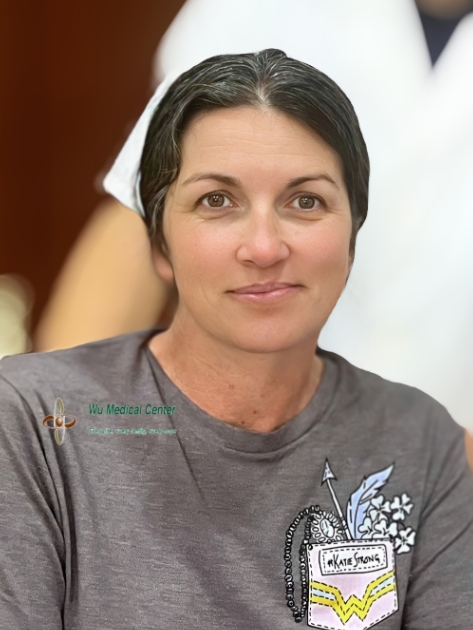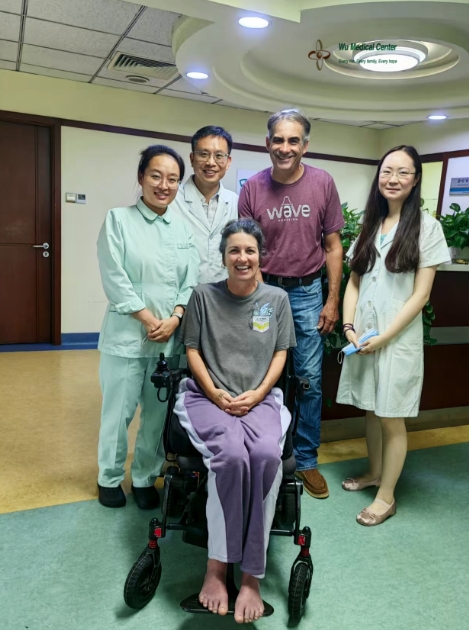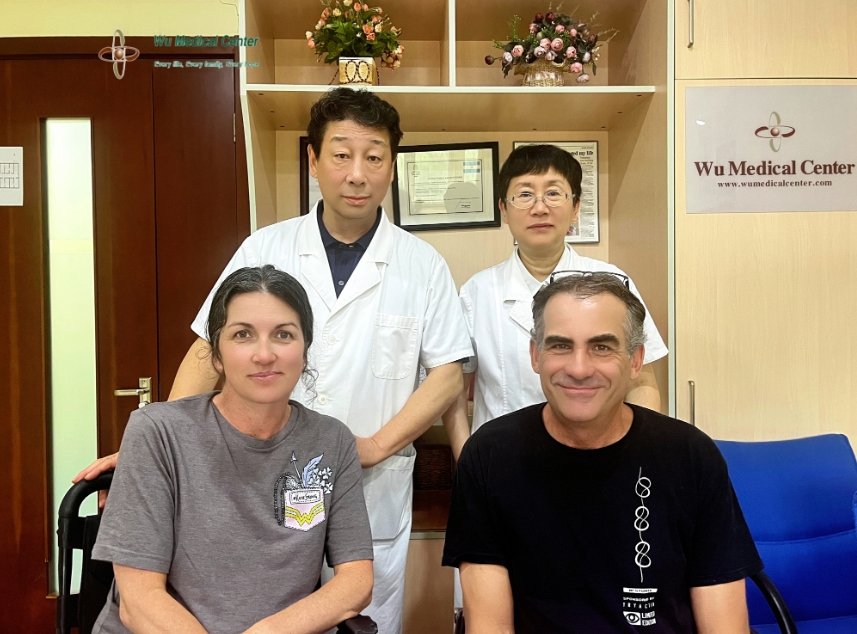Katie Leeann Garthwaite-Amyotrophic lateral sclerosis (ALS)-(American)
 Patient Name: Katie Leeann Garthwaite
Patient Name: Katie Leeann Garthwaite
Gender: Female
Age: 46 years old
Nationality: American
Diagnosis: Amyotrophic lateral sclerosis (ALS)
Condition upon Admission:
The patient developed weakness in the left lower limb 3 years ago without any obvious trigger, accompanied by a dragging sensation while walking, significant foot drop, and muscle atrophy with fasciculations. The condition progressively involved other limbs, and a local hospital diagnosed her with "Amyotrophic Lateral Sclerosis." Currently, the patient spoke coherently with clear pronunciation and had no difficulty swallowing. She could lift both upper limbs above her head, but her triceps strength was weak, making her unable to resist against force. The strength in her wrist and finger joints was relatively preserved. Both lower limbs had essentially lost their motor function, with significant muscle atrophy. When lying flat, only slight movement was observed in the toes of the right foot, while no muscle contractions were seen in the left lower limb. The patient had a past infection of Lyme disease, which was treated, and she was currently recovering well.
Physical Examination upon Admission:
The patient's heart rate was 50-55 beats per minute, respiratory rate was 18 breaths per minute, and blood pressure was 112/75 mmHg. She was 168 cm tall and weight 59 kg. There was no jaundice on her skin, and her lips showed no cyanosis. Her chest was symmetrical, with clear breath sounds in both lungs and no significant dry or wet rales heard. Her heart sounds were strong, with a slow and regular rhythm, and no obvious murmurs. Her abdomen was soft, and there was no enlargement of the liver or spleen. Mild edema was present in both lower limbs, and the skin temperature was low.
Neurological Examination:
The patient was alert, articulate, and in good spirits. Her calculation ability, memory, and orientation were all normal. She had a soft neck, with neck rotation and shoulder shrug strength grade 4. Strength in both upper arms (deltoids and biceps) was grade 4, while both sides' triceps strength was grade 3. The strength in both wrists was grade 4-, and interphalangeal strength was grade 4. The left lower limb had grade 0 muscle strength, while the right lower limb had grade 1 muscle strength. Fasciculations were present in all four limbs. Muscle tone in both upper limbs was generally normal, while muscle tone in both lower limbs was decreased. Tendon reflexes in both upper limbs were essentially normal, whereas those in both lower limbs were reduced. Pathological reflexes were negative. The finger-to-nose and finger opposition tests were essentially normal, but the heel-to-knee-shin test could not be completed due to strength limitations. Sensation in all four limbs was generally normal, and meningeal signs were negative.
Treatment Process:
The patient was definitively diagnosed with "Amyotrophic Lateral Sclerosis" upon admission. During her hospitalization, she received neural stem cell therapy to repair motor neuron damage, along with mesenchymal stem cells for neurotrophic, endocrine, and immune support. Adjuvant treatments included Edaravone, Riluzole, neurotrophic factors, reduced glutathione, and immunoglobulin, as part of a comprehensive rehabilitation program.
Post-Treatment Outcomes:
The progression of the disease has halted, and there has been a significant improvement in motor function. Overall muscle strength has increased by 20-30%. Neck rotation and shoulder shrug strength have improved to nearly grade 5. Strength in both upper limbs (deltoids and biceps) is grade 5, and triceps strength is also grade 5. Wrist and interphalangeal strength have improved to nearly grade 5. The left lower limb shows grade 1+ muscle strength, with some movement observed in the toes of the left foot and significant contraction of the hamstrings. The right lower limb strength has improved to grade 2, with the right foot able to control side-to-side movements and increased flexibility in the toes. Core strength has improved, and abdominal strength has increased. Cardiac function has improved, with a heart rate maintained at 60-70 beats per minute. The patient's energy levels, physical capacity, and activity endurance have all significantly increased.




